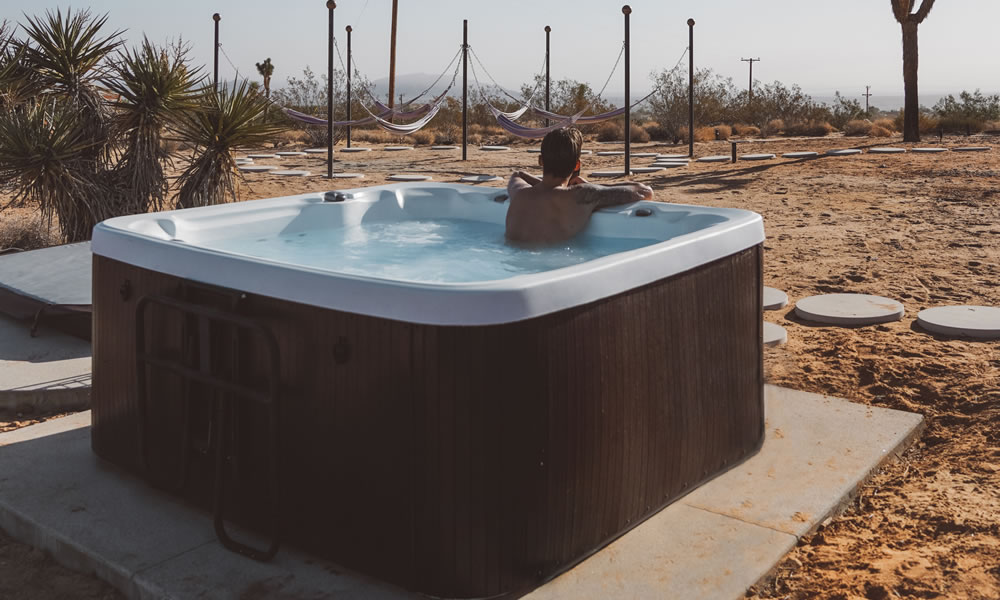How Often Should You Review Your Legionella Risk Assessment?

In this article our water risk management experts answer the question… how often should you do a legionella risk assessment? The article explains why you need this kind of safety assessment, what’s involved in the assessment process, and when and how often legionella risks need to be reviewed. The article uses some simple examples to help you recognise what you need to do and when you need to take action.
A version of this story looking at how often legionella assessments need to be reviewed first appeared in Legionella Control International’s newsletter. To get it in your inbox, sign up for free here.
Why do you need a legionella risk assessment?
Legionella is one of many types of bacteria found in the world around us. Lakes, streams, and rivers can all contain low levels of the bacteria, along with other natural water sources… however, these do not typically give cause for concern.
While manmade water systems are also likely to have legionella present, such systems can create the perfect circumstances for the bacteria to multiply, sometimes to dangerous levels. If bacterial levels should go beyond acceptable limits in the water, it raises the risk for those people exposed to the water system who can become ill.
What diseases are caused by legionella?
Legionellosis is the name given to the various diseases caused by Legionella bacteria. In the UK the two most common diseases are the milder form called Pontiac fever, and the most serious – and arguably best known – Legionnaires’ disease.
- Pontiac fever
- Legionnaires’ disease
If you are a business owner, you rent out or manage property, it is likely to be your responsibility to make sure the property’s water systems are safe to use by your staff, tenants and other people. To make sure you comply with the law in this area your first step should be to carry out a legionella risk assessment or your property… it’s a legal requirement.
What is a legionella risk assessment?
A legionella risk assessment is a full assessment of the water systems used in the property along with anything else that uses water in the building including process equipment, spa pools, cooling towers, fountains etc.
The assessment would cover pipework, boilers, water tanks, taps, showers, and similar outlets… in fact, it should cover anything that uses water. In some instances where larger business-related properties are concerned, cooling towers, spa pools, and fountains might also be present. Anything that uses, carries, or stores water in this sense should be covered in the legionella assessment.
How often should the legionella risk assessment be carried out?
How often you review your risk assessment depends on the individual circumstances. The Health and Safety Executive in their ACOP L8 regulations recommend that the risk assessment be reviewed regularly, especially if there’s reason to suspect it’s no longer valid.
The ACOP says the legionella risk assessment should be seen as a living document which must be reviewed regularly to make sure it remains up to date.
With simple buildings where the risks are low we recommend that the basic rule of thumb is to review your risk assessment every two years, or sooner if there is a significant change.
What’s considered a significant change to a water system?
If there are significant changes to the water system, a fresh risk assessment should then be undertaken. There are various changes that would trigger this… the most obvious would be if elements were added or taken away from the water system.
For example, a new cooling tower may be installed. A gym might add a hot tub for its clients to use. A new fountain may be added to the internal reception of a large office building.
Regardless of the reason for the change, any alteration to the water system would warrant a review of the risk assessment.

Hot tubs can increase legionella risks significantly and should be part of the risk assessment.
Alterations or additions may lead to increased risk factors, i.e. an aerosol spray could be created by the fountain and from the hot tub, both of which could be inhaled by those nearby in these examples. If the building experiences a change of use, this should also trigger a fresh assessment. A change of use may indicate people are now using the building that could fall into an age group that is at greater risk of contracting Legionnaires’ disease if exposed to contaminated water or spray.
Your legionella assessment report should also be reviewed if key personnel, such as the responsible person or key contractors have changed, or your legionella control measures are no longer effective. For a simple water system such as a small residential let the assessment is likely to be fairly straight forward, but for more complex building water systems it is best to carry out a full risk assessment from scratch.
A new legionella assessment is also required if your control measures have stopped working
Sometimes, legionella control measures may simply consist of maintaining safe water temperatures and making sure all outlets are regularly flushed through. This is most likely to occur in simple water systems, i.e. in a domestic property that is privately rented out and frequently in use.
However, in larger buildings with more complex uses, the control measures may also be more complex. It is in such buildings that established legionella control measures are more likely (although by no means guaranteed) to stop working.
With many more potential issues that could arise, regular testing may reveal legionella levels have risen beyond acceptable safe levels. For example, a large and complex building such as a hospital may have many toilets, washrooms, showers and kitchen areas, all with connections to the water system. Factories may have high risk cooling towers and/or use water as part of their manufacturing processes. In this scenario, the most recent legionella risk assessment should be reviewed to determine what changes should be made to brings things back under control. This review of the assessment report may suggest making changes to the water system to reduce risk, or changes to the chemical dosing of the system. Identifying why existing control measures no longer work as they previously did should help to identify where the issue has come from, allowing targeted remedial action to be taken along with further validation testing.
Is it best to hire an expert to help with legionella risk assessments?
Whether you employ an external legionella risk assessment company or do it yourself depends on the complexity of the water systems in question.
A small private property rented by a landlord is likely to be at minimal risk with a simple water system that would require only a basic legionella assessment.
The more complex the building and the water systems are, the more likely you would benefit from hiring a professional company such as Legionella Control International who can provide qualified and experienced specialists to undertake a comprehensive risk assessment. They would also provide advice on when a legionella risk assessment review would be required.
Keeping legionella at safe levels within any water system is the aim. This can prevent outbreaks of Legionnaires’ disease that would pose a risk to all those using that water supply.
Specialist legionella risk assessment surveys
Our teams of water safety specialists support business owners, landlords and those responsible for the control of waterborne pathogens including Legionella bacteria in the workplace, helping them to protect their staff, tenants and others and so meet their health and safety obligations in this specialist area.
We deliver expert legionella risk assessments, independent compliance auditing, training courses, expert witness support and other environmental risk management services that help keep people safe.


